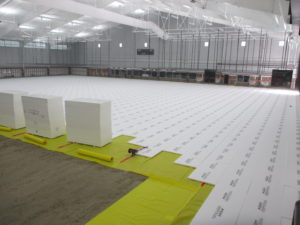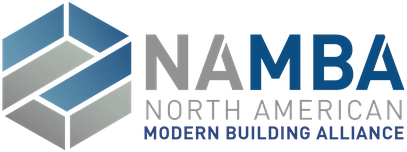Holistic Assessment of Materials
 The building code is a tool that establishes the minimum level of performance and safety with no intention of creating barriers based on “single issues” that can be addressed by integrated design. This tool is used by architects, designers, product manufacturers and building officials.
The building code is a tool that establishes the minimum level of performance and safety with no intention of creating barriers based on “single issues” that can be addressed by integrated design. This tool is used by architects, designers, product manufacturers and building officials.
While there is a cost to complying with fire performance testing required by the building code for the use of combustible materials, it is the best way to maintain fire safety (along with other fire safety measures in the building code) while giving designers a choice of materials and assemblies that provide additional code compliance opportunities and building performance benefits. Unnecessary restrictions based on material content or combustibility alone, without a view toward the overall system performance, directly impact the ability to design buildings that are code compliant and continue to perform with multiple functional and safety benefits over the life of the structure.
Use of an assembly of exterior materials that has been tested for fire performance provides a design-flexible approach without complicating prescriptive requirements with unknown impacts. For example, an assembly that has been through an NFPA 285 full assembly fire test has a known performance, so requirements for fire-blocking are not necessary to control flame spread. In this example, a design meets fire requirements and has the flexibility to better manage rainwater drainage, which will also improve building and exterior wall covering durability. There are many attributes designers may want to trade off, and a holistic assessment of the materials allows them to do so.
Other examples include:
 The use of lightweight materials (many of which are combustible) can reduce structural loads on buildings, while also improving worker safety through reduced physical effort or strain to install.
The use of lightweight materials (many of which are combustible) can reduce structural loads on buildings, while also improving worker safety through reduced physical effort or strain to install.- The use of fluid-applied, water-resistant barriers (most of which are combustible) can seal complex shapes while preventing water damage and degradation to buildings.
- The use of high R-value/inch continuous insulation within or behind exterior wall coverings allows for thinner walls and reduces stresses on cladding support systems.
The key is to choose materials and assemblies (whether combustible or non-combustible) in a way that is code compliant and does not sacrifice one aspect of safety or function for gain in another aspect of safety or function. This is what the current use of NFPA 285 does for the application of combustible materials, like foam plastics or water-resistant barriers, on the exterior side of exterior wall assemblies.

